Weekly Advanced Technologies〔58〕

Weekly Advanced Technologies〔58〕| Uncovering the Micro-Scale Symphony of Life: The "Effective Tool" for Plotting the Dynamic Brain Atlas Has Been Invented; Create "Invisible Sunscreen Garments" Exclusively for Perovskite Materials, Greatly Boosting Battery Energy Efficiency
Cells, as the fundamental units of life activities, are constantly presenting a magnificent chapter of complex inter-cellular interactions within the human body. Centering on this mesoscopic scale that links the microscopic and macroscopic, the research team of DAI Qionghai at Tsinghua University has developed the RUSH3D mesoscopic in-vivo microscopy instrument. This instrument enables scientists to, for the first time, capture the tissue heterogeneity with cellular precision in a panoramic view on the scale of a living mammal organ, thus opening up new vistas for research in fields such as brain science and oncology.
Under the bright sun, people often use sunscreen to create a protective shield for their skin. Recently, the research team led by SONG Yanlin at the Institute of Chemistry, Chinese Academy of Sciences, has customized a unique set of chalcogenide materials, the "invisible sunscreen". This "sunscreen" contains ultraviolet - heterogeneous functional molecules and is used to prepare chalcogenide modules with sustainable ultraviolet photostabilization.
Based on the weekly diary of technology provided by the daily list of the NCSTI online service platform, we launch the column "Weekly Advanced Technologies" at the hotlist of sci-tech innovation. Today, let's check out No.58.
1. Cell 丨Uncovering the Micro-Scale Symphony of Life: The "Effective Tool" for Plotting the Dynamic Brain Atlas Has Been Invented
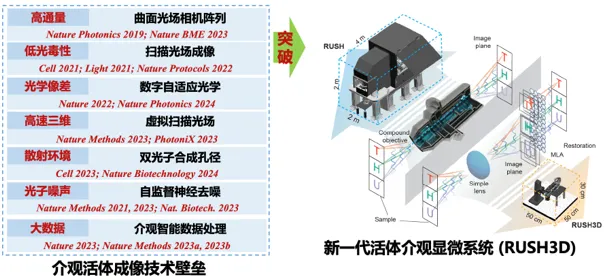
RUSH3D System Diagram
Cells, as the fundamental units of life activities, are constantly presenting a magnificent chapter of complex inter-cellular interactions within the human body. However, at this mesoscopic scale that links the microscopic and the macroscopic, technology has restricted our in-depth exploration of the spatio-temporal heterogeneity of cells in living environments, especially at the level of mammalian organs, and has hindered progress in many fields such as brain science, immunology, and oncology. Take brain science as an example. Understanding the delicate connections and functions among neurons is the key to unlocking the mysteries of the brain. But traditional microscopy and functional nuclear magnetic techniques have their own limitations, making it difficult to meet the demand for simultaneous large-scale and high-resolution observation.
Against this background, the research team of DAI Qionghai at Tsinghua University developed the RUSH3D mesoscopic in vivo microscope to fill this technology gap. The system not only has a 3D field of view at the centimeter level, but also attains sub-cellular-level resolution. It allows for continuous high-speed and low-phototoxicity observation for tens of hours, which completely transforms the way we perceive the dynamic interactions of cells. For the first time, RUSH3D enables scientists to capture tissue heterogeneity with cellular precision across the scale of living mammalian organs in a panoramic manner, opening up new prospects in research fields such as brain science and oncology. RUSH3D creates new opportunities for research in brain science, oncology and other fields.
In the realm of brain science, the application of RUSH3D is especially fascinating. By recording large-scale neurons in the dorsal cortex of awake mice over a long period, at high speed and in three dimensions, scientists have found that the activity of neuronal networks is by no means restricted to a specific area but is widely spread across the cortex.
Moreover, each region processes sensory information in its own unique way. This finding challenges traditional concepts and uncovers the complexity of sensory and motor control mechanisms. Additionally, RUSH3D also discloses the conduction patterns of neuronal networks during spontaneous motor behaviors, which offers new viewpoints for understanding fundamental human issues like consciousness and intelligence.
RUSH3D is anticipated to assist in mapping mesoscopic brain functions throughout the dorsal cortex, unveil the mysteries of dynamic connectivity and function among neurons, and offer new insights into a broader range of medical issues such as brain diseases. It will also inspire innovation in brain-inspired AI technologies.
2. Create "Invisible Sunscreen Garments" Exclusively for Perovskite Materials, Greatly Boosting Battery Energy Efficiency
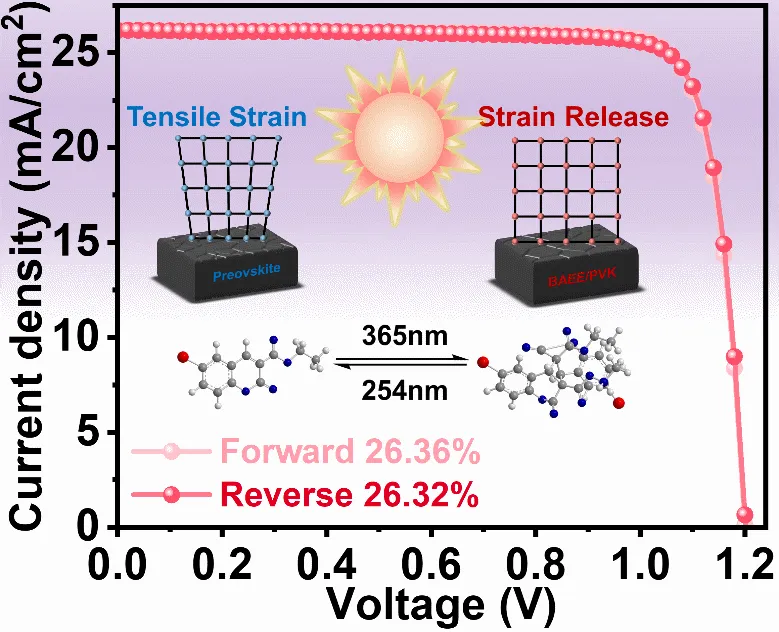
Preparation of high-efficiency chalcogenide solar cells by molecularly induced stress conditioning
Residual stresses and defects in the preparation of chalcogenide thin films lead to UV-prone degradation of chalcogenide materials, reducing the efficiency and stability of chalcogenide solar cells and limiting the industrial application of chalcogenide photovoltaics.
The group of SONG Yanlin at the Key Laboratory of Green Printing, Institute of Chemistry, Chinese Academy of Sciences utilized molecules with UV is omerization functions as “sunscreen” for chalcogenides and introduced them into the active layer of chalcogenide solar cells. This can protect calcite solar cells from degradation by UV damage and passivate defects by intermolecular conformational transitions under UV irradiation. On this basis, the team proposed a strategy for sustained UV protection by molecular interconformational isomerization, and prepared a chalcogenide module with sustainable UV photostabilization.
The group also put forward molecularly-induced strain modulation and interfacial passivation strategies for enhancing the efficiency and photostability of chalcogenide solar cells. In this study, the cycloaddition reaction of 6-bromocoumarin-3-carboxylic acid ethyl ester (BAEE) is utilized to consume ultraviolet light, thereby suppressing the residual tensile stress of the film. At the same time, BAEE can form a bond with nickel oxide to promote the growth of chalcogenide and passivate interfacial defects. As a result, a certified efficiency of 26.08% and an open - circuit voltage of 1.201V are obtained. This reduces the open - circuit voltage loss and improves the long - term stability of the device, providing a new strategy for enhancing the efficiency and stability of chalcogenide photovoltaic conversion devices.
3. Carry Out "Digital Investigation" on AI-based "Face-Swapping"
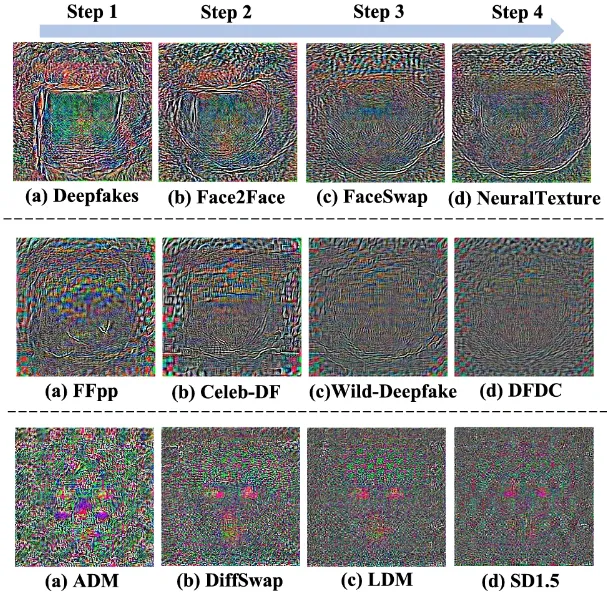
AI face-swapping "transplants" one person's facial features onto another person's face through artificial intelligence to generate realistic videos or images. With the maturity and popularization of the technology, AI face-swapping has been widely used in fields such as film and television production, but it has also caused a series of problems. Lawbreakers use this technology to commit fraud and slander, challenging social security and personal privacy. "Face-swapping" software has come into people's view relying on an AI technology-DeepFake, which also brings corresponding challenges to supervision. Existing facial forgery detection methods attempt to learn features with wide adaptability, but there are still deficiencies in practical applications. In addition, fine-tuning these methods on historical training data is both time-consuming and requires a large amount of storage resources.
Focusing on Continual Face Forgery Detection (CFFD) technique, the team of JI Rongrong from the School of Informatics Xiamen University plans to learn from new forgery attacks without forgetting previous forgery attacks. The research team used Universal Adversarial Perturbation (UAP) to model historical forgery distributions and knowledge distillation techniques to maintain the variation of real facial distributions between different models.
When training new data, the previously saved perturbation features are simply combined with the real data to recover the previous forged historical distributions, and the co-training enhances the model's resistance to forgetting. They also constructed a new CFFD benchmark and designed three evaluation protocols. Experiments show that the HDP method outperforms existing state-of-the-art methods on these benchmarks. Furthermore, by storing only one anti - perturbation per round, the new method can increase the anti-forgottenness rate by 17% in comparison with the traditional method which requires storing thousands of samples.
4. Emotions "Get Electrified" into Images: This System "Fixes" Emotional States in This Way
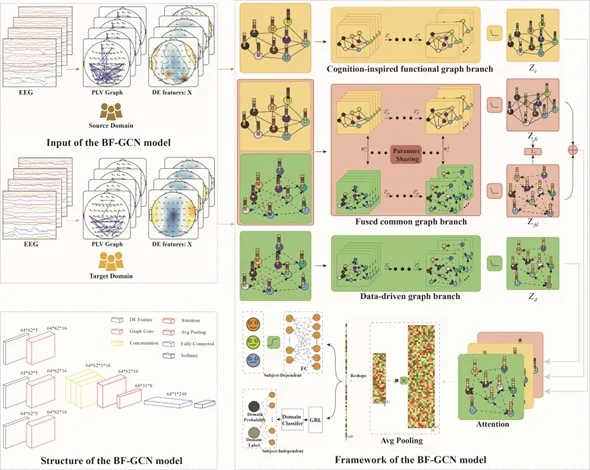
Recently, in view of the cognitive interpretability problem existing in the application of deep-learning strategies in emotional electroencephalogram (EEG) recognition, the Brain - Machine Interaction Research Team in the School of Life Science and Technology, University of Electronic Science and Technology of China, takes the emotional EEG network as a kind of cognitive prior graph information for characterizing the individual emotional process. Through a strategy that combines cognitive inspiration and data-driven approaches, it learns the latent graph features of emotional EEG signals and thus proposes a Brain network initial inspiration and Fused attention mechanism (BF-GCN) based on brain cognitive mechanism.
In this learning system, the individual emotional electroencephalogram (EEG) network is first utilized as a heuristic map feature with cognitive prior. Then, data-driven and cognitively - inspired learning strategies are integrated via an attentional learning mechanism to make up for the limitations of a single data-driven learning strategy in the cognitively interpretable map characterization of emotional EEG signals. A series of experimental results of the research team validate the effectiveness and superiority of the model in the depth map feature mining of emotional EEG, and offer a research direction for constructing a robust, efficient, and generalized emotional EEG decoding model.
In order to effectively depict the structural similarity of cognitive modules among emotion electroencephalogram (EEG) network samples, they also put forward an EEG graph embedding model L1-CGE with cognitive-inspired learning characteristics to achieve the cognitive graph characterization of individual emotion EEG networks and the robust assessment of individual emotion states.
The experimental results indicate that the L1-CGE model can effectively meet the application requirements of model robustness and real-time performance for online emotion decoding tasks, and realize online real-time decoding and dynamic assessment of individual emotional states with an accuracy of 84.38%. A series of its experimental results verify the robustness and effectiveness of the L1-CGE model in decoding individual emotional states, and provide support for the further realization of the application development of the online emotional brain - computer interface system.
5. JACS丨Precise Preparation of High-density Single-Atom Catalysts Using Air Pressure Fine-tuning Technology

Fabrication of single-atom catalysts by air pressure-controlled metal diffusion
Catalysis is one of the cores in the chemical industry and has a profound impact on the development of modern society and science and technology. In recent years, single-atom catalysis has drawn the attention of both academia and industry. During the fabrication of high-density single-atom catalysts, single atoms are prone to aggregate into clusters, leading to low fabrication efficiency and stability. Consequently, how to inhibit the formation of clusters is one of the major challenges in fabricating high-density single-atom catalysts.
Recently, the Institute of Mechanics of the Chinese Academy of Sciences (IMS), in collaboration with the Max Planck Institute for Polymer Research in Germany, Zhejiang University, Jiangsu University, and the University of Tartu in Estonia, proposed a new method to fabricate ultra-high-density single-atom catalysts by controlling the diffusion of metals through air pressure. This achievement provides a new idea for manufacturing high-density single-atom catalysts and lays the foundation for challenging the limits of material science and realizing atomic-level precision manufacturing in the future.
Single-atom catalysis is a technology for finer control of chemical reactions. This technology uses individual metal atoms as the active sites where catalysis occurs, enhancing the efficiency of metal atom utilization and catalytic reaction activity. It was found that lowering the air pressure inhibited the clustering of metal atoms, resulting in a single-atom loading almost three times that obtained at atmospheric pressure.
The study discloses the mechanism through which alterations in air pressure regulate the formation of monometallic atoms and clusters by means of molecular dynamics and computational fluid dynamics simulations: By decreasing the air pressure to increase the mean free path of gas molecules, the probability of metal clustering is reduced, the probability of metal-ligand binding is increased, and the formation of monometallic atoms is promoted.
The researchers verified the stability of this method through the electrocatalytic oxygen reduction reaction and achieved the Ullman-type carbon-oxygen coupling reaction on a single copper atom, thus expanding the application scenarios of single-atom catalysis.
6. Nature丨Inter-disciplinary Intersection Constructs a Multidimensional Protection Network Against the Risks of Emerging Animal-Origin Infectious Diseases
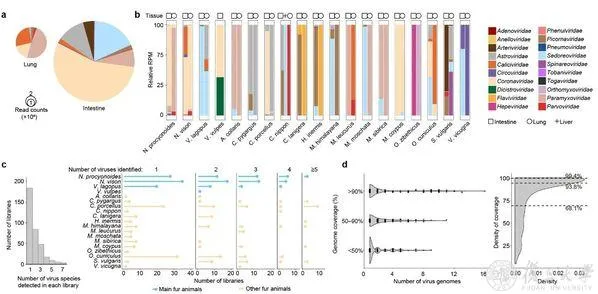
High-resolution viromes of mammals
In recent years, the frequency of emerging infectious diseases and even global pandemics, which are caused by the spillover of viruses such as pseudorabies and monkeypox from animals to humans, has increased significantly. How to accurately predict and forecast emerging infectious diseases of animal origin is an important scientific issue related to green and healthy farming as well as public health prevention and control.
Prof. SU Shuo's team and his collaborators from the School of Public Health, Fudan University use cutting-edge cross-cutting research methods to reveal the viral genome composition, ecological characteristics and cross-species transmission patterns in the macro-genomic data of various mammals, laying an important data foundation for the construction of a multidimensional prediction and early warning system for emerging infectious diseases in the integration of human-animal-environment under the concept of “One Health”(an integrated, unifying approach that aims to sustainably balance and optimize the health of people, animals and ecosystems).
The team conducted a systematic macro-genomic study of mammals from five animal species, and identified 125 viral genomes, of which 39 can be presumed to be new viral species, which enriches the variety of viruses carried by farmed mammals. By using inter-disciplinary cross-methods such as ecological geographical distribution, evolutionary dynamics, and public big data, the team selected out multiple potential "risk" viruses that frequently undergo "host-jumping", such as norovirus and getah virus, analyzed their cross-species transmission patterns, and revealed the ecological and epidemiological characteristics of the potential "risk" viruses from multiple dimensions including spatial clustering, animal groups, populations, and tissues.
The interdisciplinary research methods of the research team have set an example for the risk assessment of other emerging pathogens and laid the foundation for constructing a multi-dimensional risk assessment system for emerging infectious diseases. This not only has a profound impact on the field of public health, but also provides new research perspectives and methodological guidance for related fields such as virology and ecology.
Columnist: Li Xiaoxiao
Translator: Liu Kaiyuan